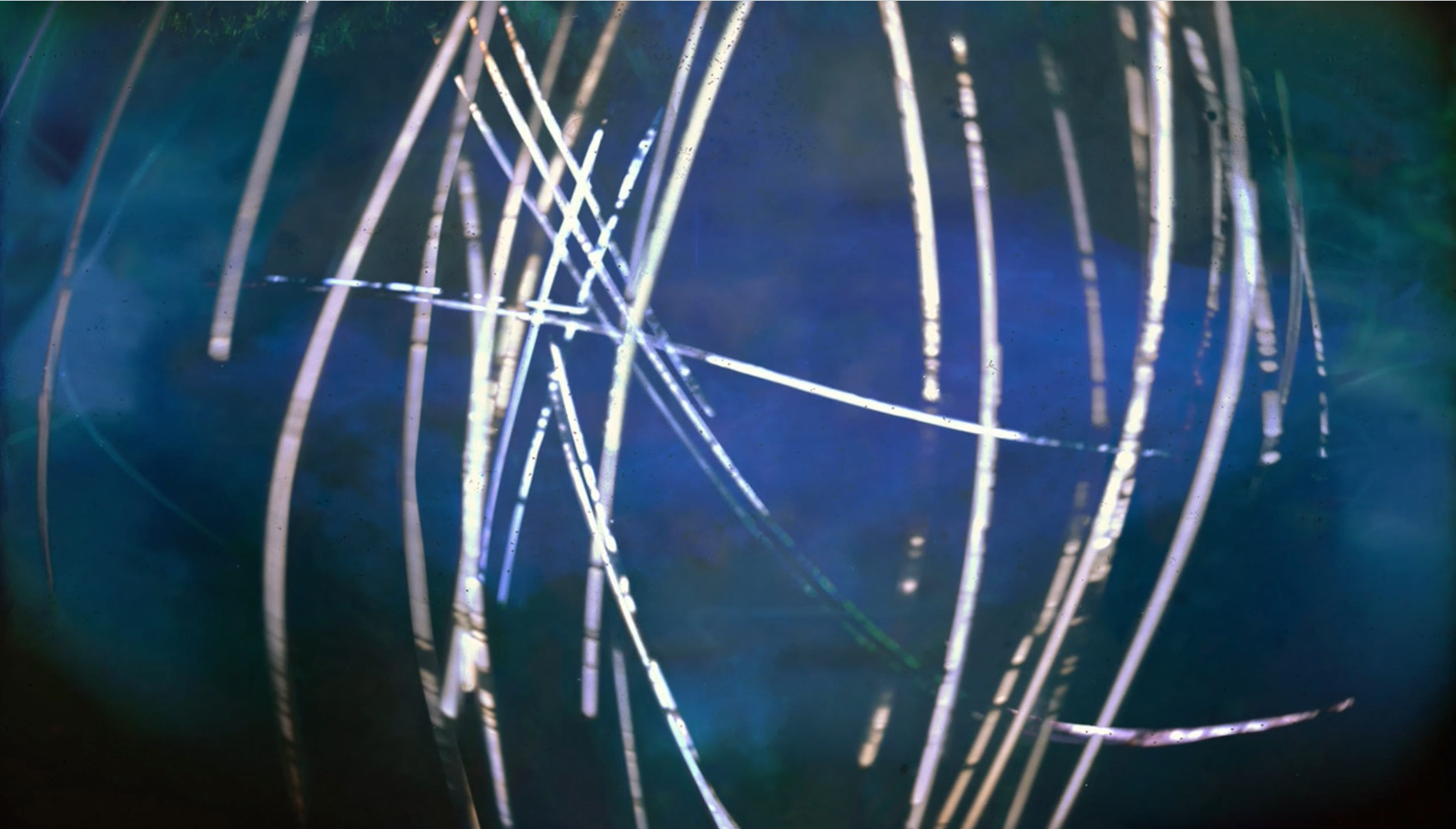
Krista Leigh Steinke, Still-frame (00:01:26) from Sun Notations, 2018 (excerpt),10 min. theatre version | 16 min. installation loop
Bright Horizons from Celestial Views
Krista Leigh Steinke and Erika Blumenfeld on the upcoming Transmissions event in Austin Texas and the eclipse on April 8th
interviews by Olivia Ann Carye Hallstein
Krista Leigh Steinke and Erika Blumenfeld elaborate on their individual relationships as artists to the sun and the moon, the cosmos. Whether the sun itself becomes the manifestation of time and spatial dimensions as it does in Krista’s work, or a larger expression of deep inquiry and interrelatedness across the atmospheric expanse as in Erika’s work, both artists share an intricate understanding of the “somatic point of departure” that the events will capture. Both working with photographic imaging and documentation, their reflections interplay the illuminating shared space that the events will foster with deep contemplation.
Krista and Erika were invited by ecoartspace to review artworks submitted by Texas artists and other members coming to Texas for the eclipse, for inclusion in Transmissions. Their own work will also be on display.
Transmissions is a one-day event that will take place on Saturday, April 6th from 11am to 8pm, at Canopy Austin, at 916 Springdale Road, in Austin, Texas.
For more information GO HERE
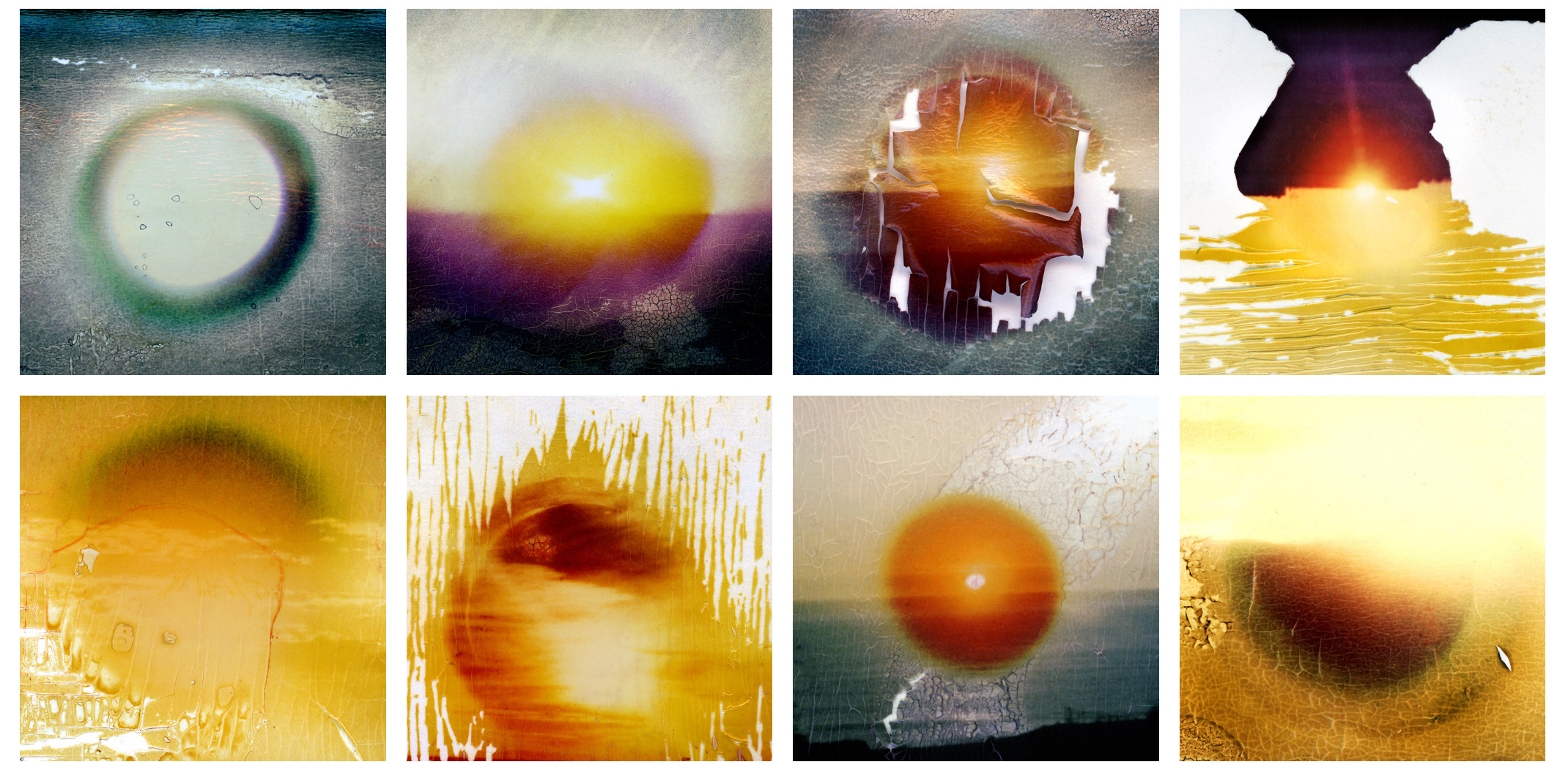
Krista Leigh Steinke, Sunspots and Slides, 2017-ongoing, archival pigment prints or sub-dye aluminum prints, sizes vary
What are you most looking forward to during the upcoming Transmissions events?
Krista: It will be interesting to observe the nuanced interplay among the diverse artworks showcased in the Transmissions exhibition, which will definitely inspire various conversations throughout the day. Mostly, I’m excited to be part of a community of artists, academics, enthusiasts, and the general Texas audience, all united in their shared interest in engaging in a meaningful dialogue centered around the sun and solar/lunar phenomena.
Erika: What I’m most looking forward to is seeing all the selected artworks together and in communication with each other in the Transmissions exhibition, especially as a meditation on and celebration of the total solar eclipse that will occur over Austin skies two days after the ecoartspace pop-up event.
The artworks, in a way, share individual methods of having received a transmission. In thinking of light transmission specifically, and the conveyance of how light acts during an eclipse event, we, in essence, become the medium through which the light passes. In this way, the artworks together also become a conceptual act of transmitting a response back to the sun.
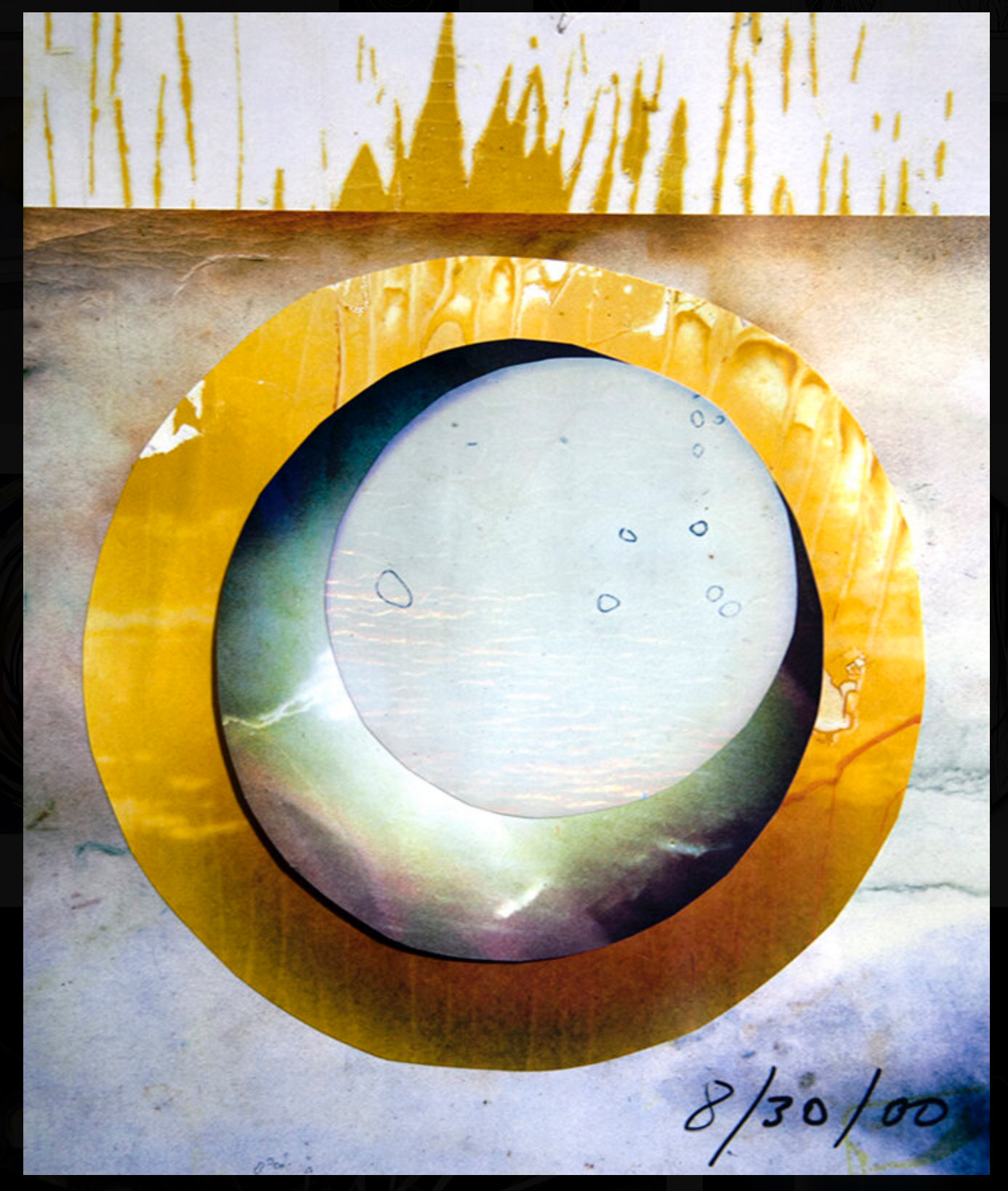
Krista Leigh Steinke, from: Time Scraps From the Universe, 2020 - in-progress
Quite a transmission in itself! Krista, your pinhole photographs also reflect on being a transmissions medium between our planet and the sun. For example, in your work Sun Notations and Sun Mapping you track the movements of the planet around the sun to reveal interconnectedness across space. How do you relate to this moment of transition at the eclipse?
Krista: The mystery of light and the passage of time is a thread that runs through much of my work. My video “Sun Notations” for example, that will be featured in the exhibition, took over five years to create. The experimental video animates over 50 pinhole solar-graphs that capture the pathway of the sun rising and setting over time, with exposures that lasted one hour up to an entire year. My homemade cameras, which sometimes contain multiple pinholes, are rotated throughout the exposure, so the rhythm of the sun’s movement becomes like a mark-making system, similar to the routine of crossing days off a calendar. Some of the exposures were taken in Texas and some in New York State. So, in this work, temporal and spatial dimensions literally expand, merge, and overlap. Incidentally, one of the animations in this piece was created during the 2017 eclipse.
Undoubtedly, the 2024 eclipse symbolizes a unique juncture in the continuum of time. In April, the actual eclipse of the sun will unfold over just a few minutes and these few minutes will not occur again for another twenty years here in North America. I love thinking about how on this day, people will be pausing from their daily routine to focus on the sun. The event, for me, is a gentle reminder that we all share the same star at the center of our solar system. The sun is a thread that ties our past to our present and an important reminder that we are part of something much larger.
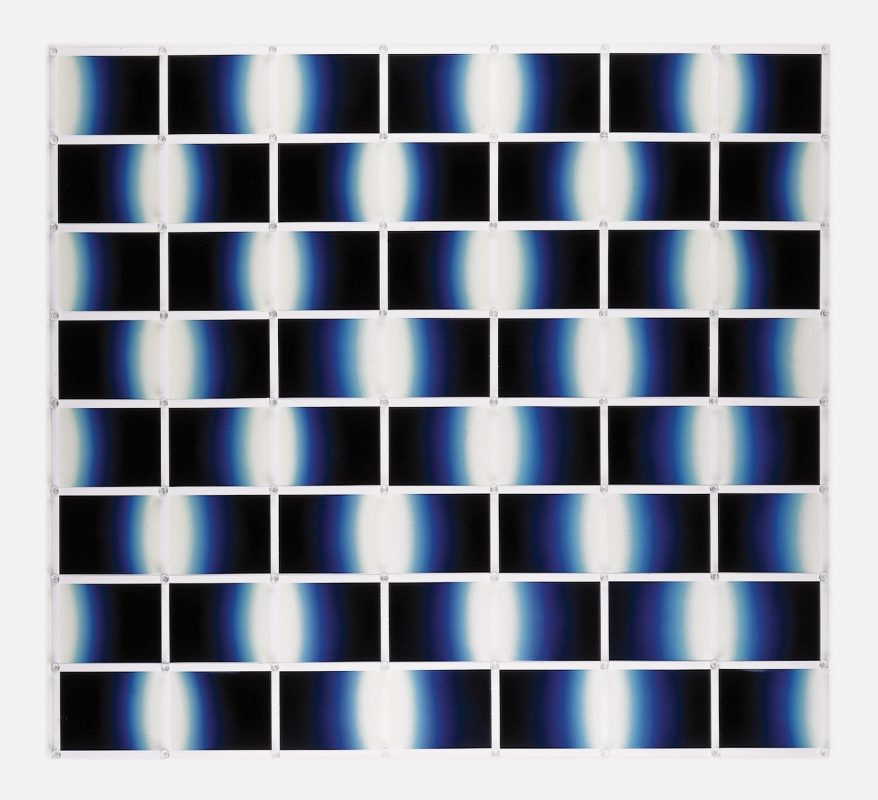
Erika Blumenfeld, Light Leaks Variation No. 13 (meditation on evolution), 1999, 56 4×5-inch Type 59 Polaroid film, 72 clear pushpins, 31.25″ x 34.25″, Installation view: Portland Institute for Contemporary Art, Portland, Oregon, Solo Exhibition, 2001, Collection: The Polaroid Collection
That is beautiful. In fact, this common thread is a theme in both of your work, though your documentation approaches differ. Erika, you take a research-based documentary approach to examining natural phenomena such as this eclipse. What natural spaces are you taking inspiration from at this time? And how are you approaching them?
Erika: Our ability to empathize with our ecological spaces is only as deep as we are willing to be fully present within them. To listen, to feel, and to sense them. While the idea of ecological archiving may at first sound like a scientific pursuit, humans physiologically evolved in relationship to these natural ecologies, and our interrelatedness is activated through our senses and embodied experiences. For me, this connectedness has material, experiential, and spiritual grounding. Archiving the ecological requires that one is part of that ecology with all our senses as witness.
My work draws inspiration from the endless variations of natural phenomena that we can encounter in our natural world, and this curiosity and wonder extends first to our Earth and then to everything our planet is connected to across the cosmos.
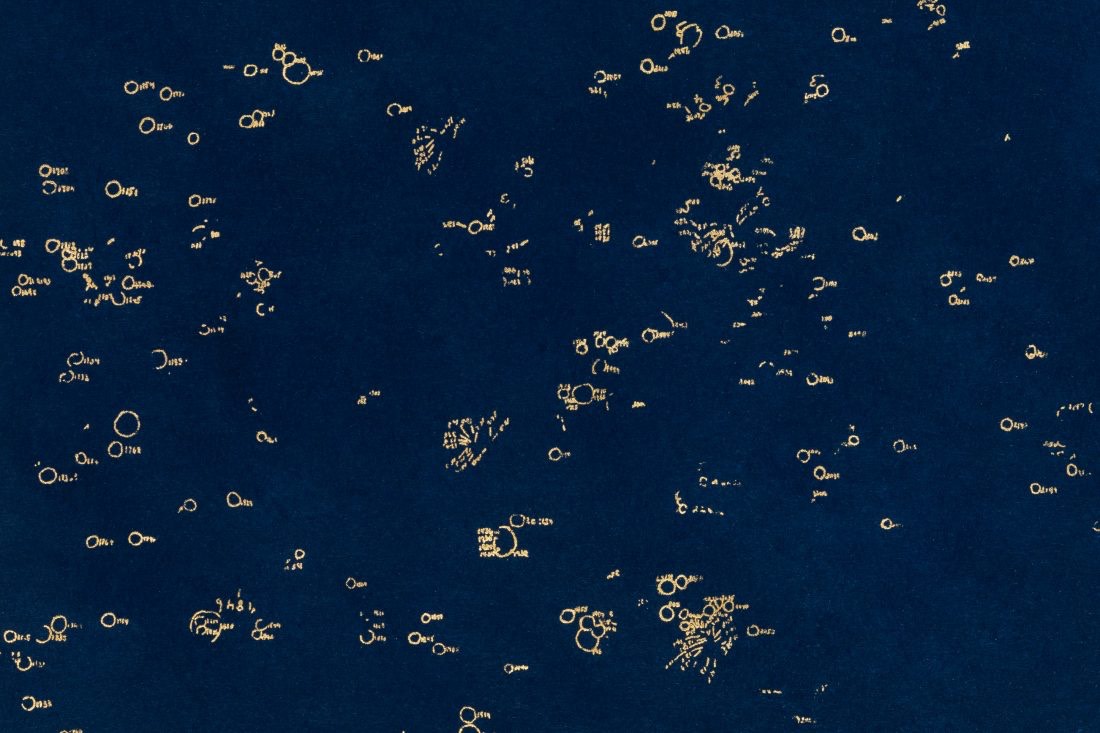
Erika Blumenfeld, Detail of Plate No. A12855 (Large Magellanic Cloud), From the portfolio Tracing Luminaries, 2022, Paper: 14 3/4 x 17 inches, Plate: 11 ¼ x 9 inches, Edition of 8
My current projects are investigating these topics in multiple ways and through diverse mediums. My primary focus currently is with my Earthlight project, in which I am building a custom imaging system to send to the International Space Station to image the light of Earth from space and create a holistic portrait of Earth as light. With the Earthlight project, my goal is to tell a story of our world written in the language of light. Every planet has its own light signature, called albedo.
Albedo is the direct relationship between the planet’s material composition and its home star. Earth’s luminosity holds the literal and poetic imprint of everything our Sun’s incoming rays have interacted with—everything that makes up our dynamic, interconnected biosphere that we are a part of. The project is an art, science, technology, and space activities collaboration that will produce albedo image data to benefit climate science and to create visualization artworks for the public. I am also working on new Light Recordings works documenting the upcoming total solar eclipse as well as the aurora borealis in the Arctic. Finally, I’ve been supporting NASA’s OSIRIS-REx Sample Return Mission by leading the high-resolution archival documentation imaging of the remarkable rocks from the asteroid Bennu that have recently been returned to Earth.
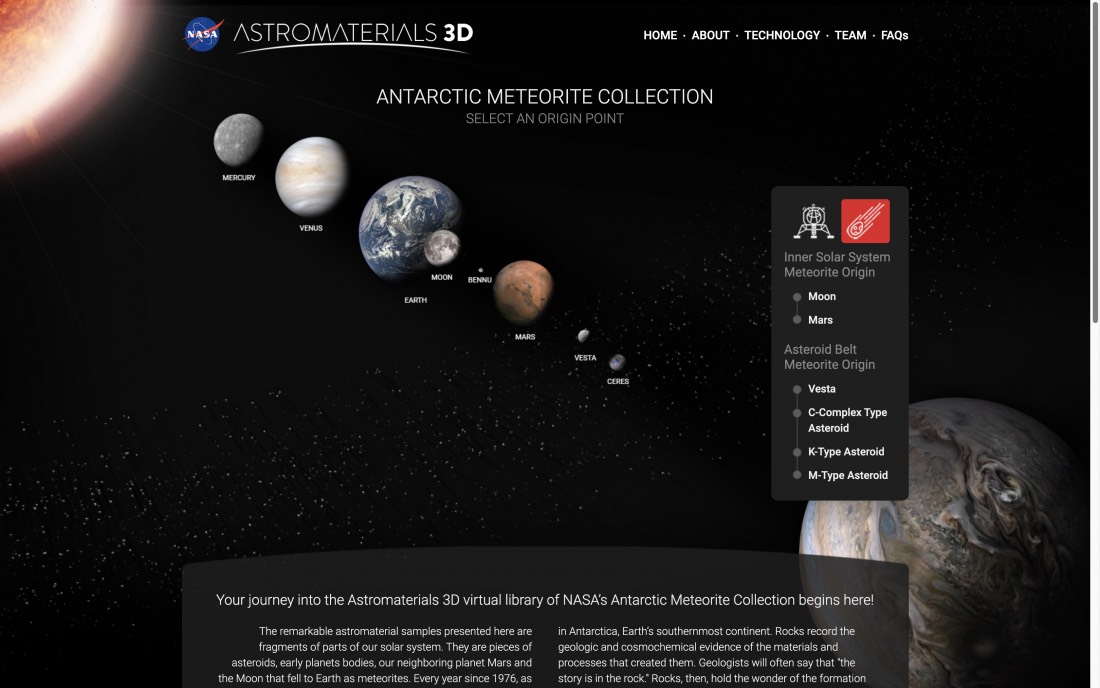
Erika Blumenfeld, Astromaterials 3D project, a virtual library for exploration and research of NASA’s space rock collections (Credit: NASA/Astromaterials 3D)
Wow, I had no idea about this! That is very exciting. It also includes topics of both light and time that play important roles in your practice as well, Krista. How will you interpret the events?
Krista: This relates closely to my choice to work in lens- based media. The word “Photography” means to draw with light, a recurring concept in my work. I am interested in how the sun and photo media are both conduits for light and time. Still photography can capture a single moment while moving images have the ability to document or record an experience. As mentioned above with “Sun Notations”, I feel like exciting results can happen when these qualities merge.
On the day of the eclipse, I am planning on setting up 4-5 cameras that will be tasked to take timelapse videos, pinhole exposures, and sequenced still images of the eclipse. Most likely, the results will end up somehow combined into one project. Looking forward to seeing all the magnificent images from around the globe that will be captured that day.
Thank you both for a mind-expanding interview! I look forward to following the upcoming event and different interpretations that are inspired by them.